
This resource contains idiom worksheets with text-based questions and answer keys for each.
- Subject:
- English Language Arts
- Material Type:
- Activity/Lab
- Provider:
- E Reading Worksheets
- Author:
- E Reading Worksheets
- Date Added:
- 02/26/2019

This resource contains idiom worksheets with text-based questions and answer keys for each.

Activities and worksheets on the use and identification of idioms.

Two-minute video that defines dramtic irony.
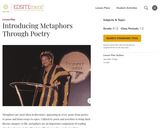
This resource includes a lesson and two accompanying activities designed to assist learners with working with metaphors on a deeper level. Beginning with a quick review, the lesson directs learners to read noted poetry and analyze deeper meaning within given metaphors. As a culminating activity, learners are asked to write their own metaphors using abstract concepts while bein provided mediums for comparison.
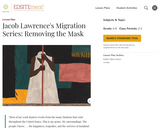
In this lesson, students analyze Jacob Lawrence'sThe Migration of the Negro Panel no. 57(1940-41), Helene Johnson's Harlem Renaissance poem"Sonnet to a Negro in Harlem"(1927), and Paul Laurence Dunbar's late-nineteenth-century poem"We Wear the Mask"(1896), considering how each work represents the life and changing roles of African Americans from the late nineteenth century to the Harlem Renaissance and The Great Migration.
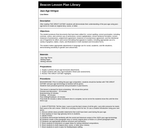
In this lesson, demonstrate their understanding of the jazz age following reading The Great Gatsby by using jazz-age terms to create an original story, scene, or letter.
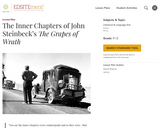
In this three-part lesson on the inner chapters of "The Grapes of Wrath" students will first determine the function of Steinbeck's opening chapter then explore the relationship between the inner chapters and the Joad narrative chapters throughout the novel. Students will view two documentaries along the way as well as read two relevant articles in order to draw their own conclusions about the purpose of this novel's inner chapters.
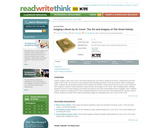
In this lesson, students will predict plot through the analysis of a book cover, as well as focus on understanding both the meaning and use of allusion. Additionally, students will analyze the significance, theme, tone, symbolism, and color used in art and its relation to the novel. Final assessment involves designing a new cover for the novel, based on their own interpretation.
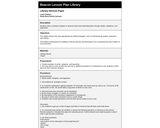
In this lesson, students write a character analysis of someone they know describing them through similes, metaphors, and hyperbole.

This unit contains a series a poetry lessons and poem suggestions on the poetry of war. Students will read and closely analyze several 'poems of war' and write their own poem as a culminating activity.

In this unit, students explore the relationship between love and war by examining texts on camaraderie among soldiers. After viewing a video on the topic and reading the short story "How to Tell a True War Story" by Tim O'Brien, students use freewriting as a means to develop a thesis statement stating their belief on the relationship between love and war. They then compose a visual collage depicting those beliefs.

In this Common Core aligned pdf teacher's guide to Luka and the Fire of Life by Salman Rushdie, students will explore the themes of love, life, and death through this whimsical novel. The guide includes discussion questions and activities, as well as extension ideas.

Activities and worksheets on the use and identification of metaphors.

In this Bright Hub Education lesson plan for teaching Shakespeare's comedy, A Midsummer Night's Dream, questions are broken into acts in order to aid in student comprehension and class discussion. Additional ideas and resources are provided as well.
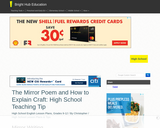
This lesson encourages students to closely examine a singular aspect of a poem by writing a mirror poem: a poem that imitates another in a specific chosen way. Students read a poem, then write a mirror poem copying an element of the first one as a way of analyzing its use of a specific poetic technique.
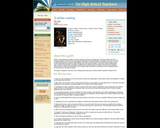
This Random House for High School Teachers reader's guide includes an introduction, discussion questions, and author biography designed to enhance student reading of author Nancy Rawles’s powerful, eloquent novel, My Jim.

This resource is a short video from TED ed, which details the linguistic origins of the word 'bewilder.' Accompanying short answer questions in the 'Discuss' section of the video's sidebar ask students to think about the changes in language over time and how prefixes alter the meaning and intent of language.

In this TED Ed lesson focused on the evolution of the word "dynamite," students will explore its roots, connotations, usage, and meaning. Discussion questions and additional resources available in the sidebar.

In this TED Ed lesson focused on the evolution of the word "earwig," students will explore its roots, connotations, usage, and meaning. Discussion questions and additional resources available in the sidebar.

In this TED Ed lesson focused on the evolution of the word "fizzle," students will explore its roots, connotations, usage, and meaning. Discussion questions and additional resources available in the sidebar.